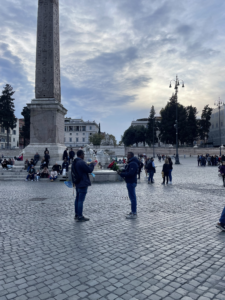Share
“La Cocina de Las Patronas is a documentary made by Javier García in 2016. Javier García is a photojournalist who has already made other productions about the history of these women. In 2009 he made the short film “La Patrona” with which he participated in different festivals around the world, winning several awards and recognitions. After that, he decided to make a long film about these women, who he filmed from 2007 until 2014, to finally release his masterpiece in 2016.
In this documentary he shows the intimacy and intimate space of a group of women called “Las Patronas” who for more than 20 years have been feeding migrants who cross their community in Amatlán de los Reyes, Veracruz. This documentary gives us a glimpse into their intimate space, a place in that kitchen where they question the position they occupy today. They began as housewives to become human rights defenders, fierce activists with no political ties and with a great sense of socialization and solidarity, whose premise is humanity. This group of women are one of the most important migrant actors in the area and are part of the Migrants’ Human Rights Defense Network, which brings together representatives of migrant centers and defenders from different parts of Mexico. In addition, in 2013 they received the National Human Rights Award.
In this film we approach their space for dialogue, the place where they clean, wash and cook, but also the place where they talk about everything, about their families and the problems of the village. Through their dialogues we observe how they have turned that kitchen into a political space where they also talk about poverty in the countryside, indifference towards migration and their own rights as women, since the community they live in suffers a high degree of discrimination and sexism. In this way, this audiovisual production offers us an example of the creation of political resistance by this group of women.
This documentary shows one of the most dangerous but busiest routes from Central America to the United States, the Mexican goods train known as “La Bestia” (“The Beast”) or “Train of Death”. It is estimated that between 400,000 and 500,000 people risk their lives on the death train every year. What is not known is how many fails to make it onto the moving train and end up injured or dead. This train follows two different routes through Mexico, making several stops, where migrants take advantage of the opportunity to board the train. However, this is only one of many routes that migrants from Central America use to reach the United States. However, it is clear that “La Bestia” is one of the most popular.
Speaking personally, I consider this documentary to be of outstanding value, as it shows us the potential of civil society as a migratory actor in one of the most important and dangerous migratory routes on the continent. It brings us closer to this group of women and offers us a story of humanity and freshness. It shows us how these women broke the pattern of violence in their community and spread this feeling to many parts of Mexico such as universities and associations.


